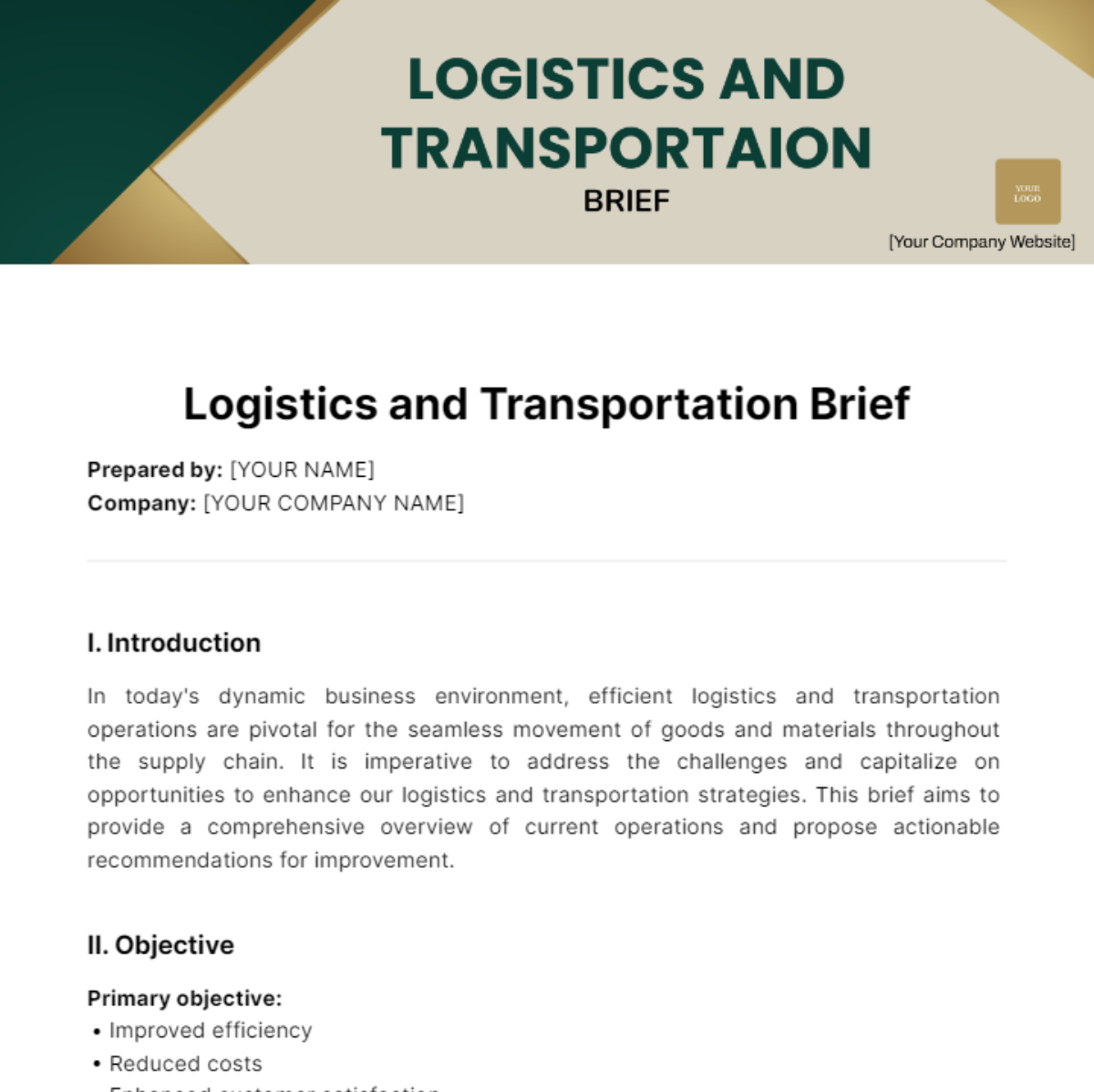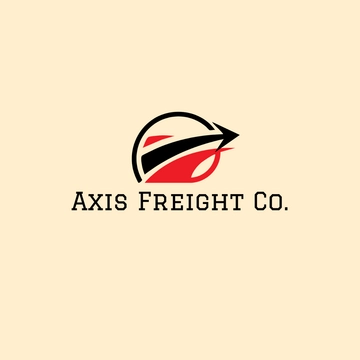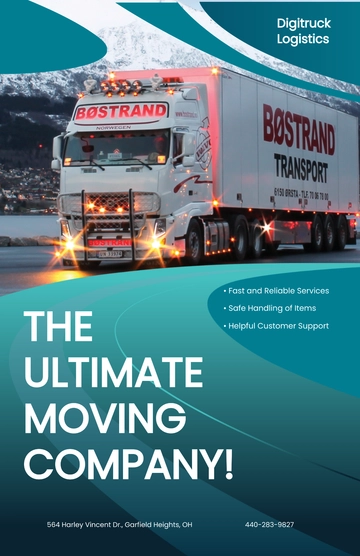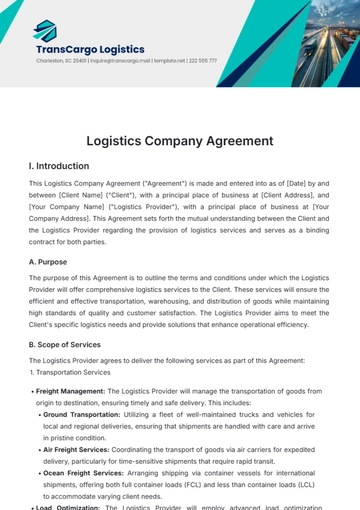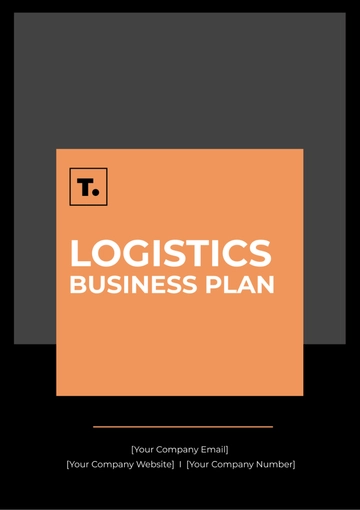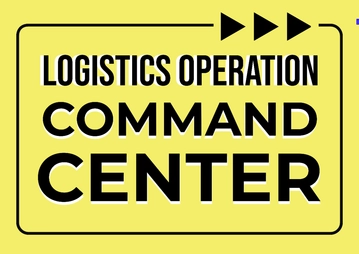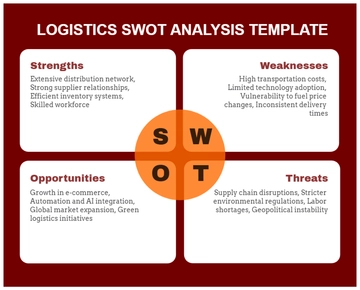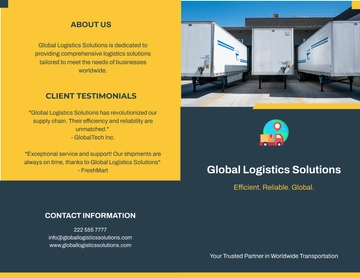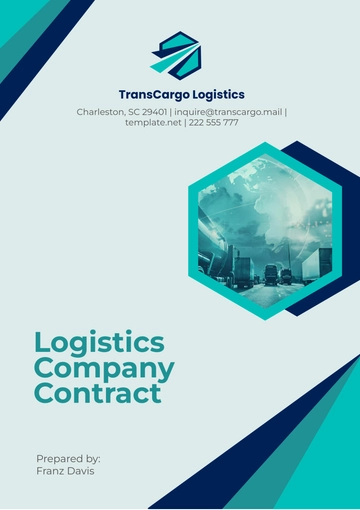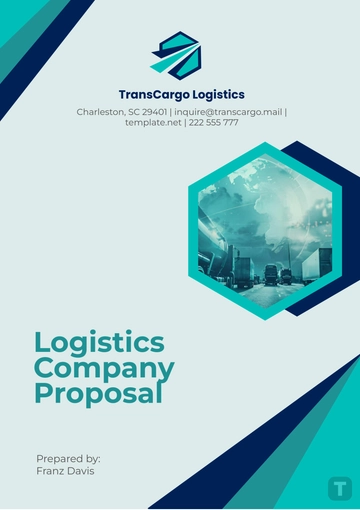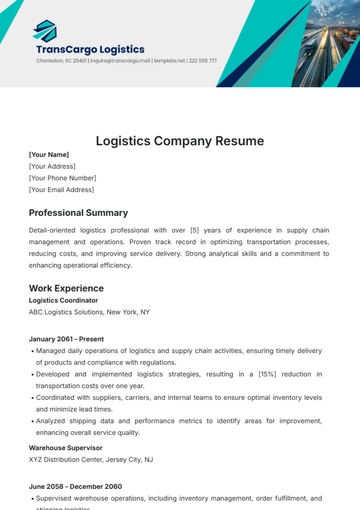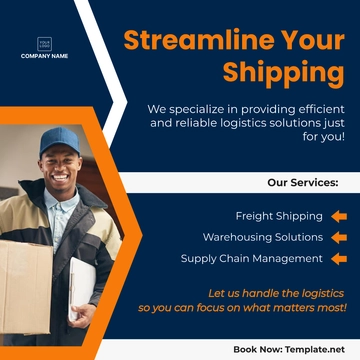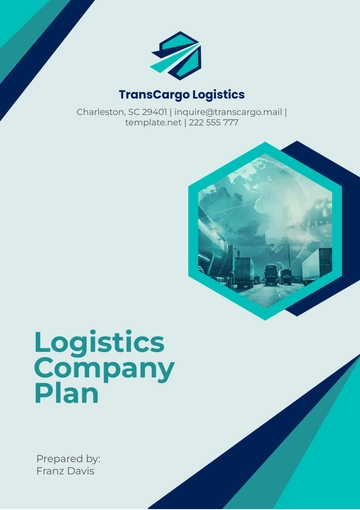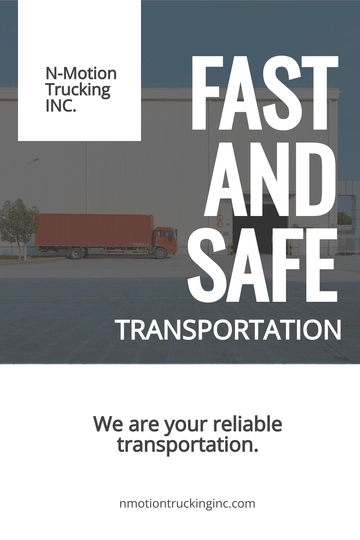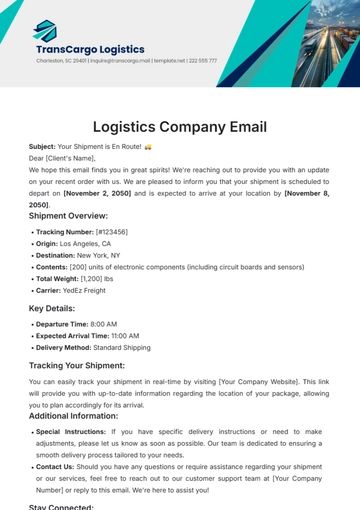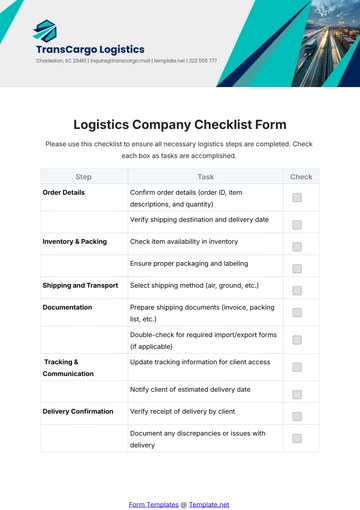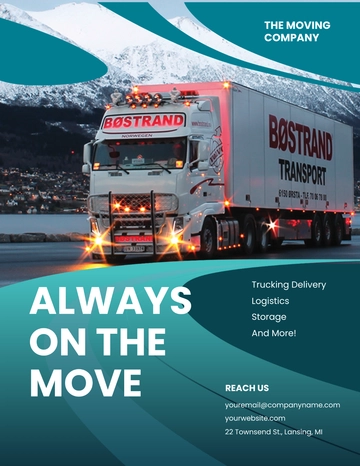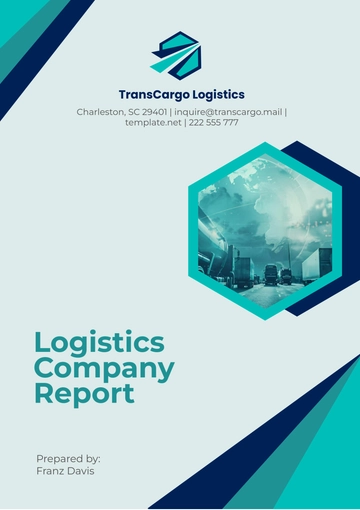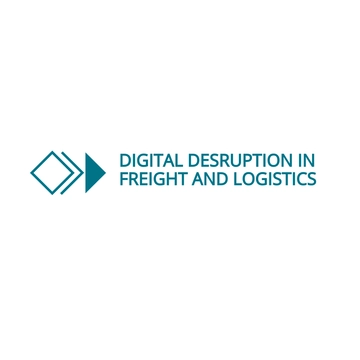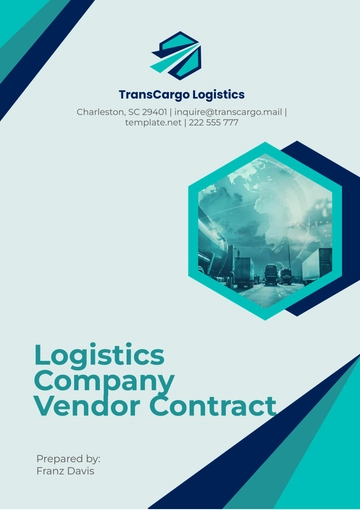Logistics and Transportation Brief
Prepared by: [YOUR NAME]
Company: [YOUR COMPANY NAME]
I. Introduction
In today's dynamic business environment, efficient logistics and transportation operations are pivotal for the seamless movement of goods and materials throughout the supply chain. It is imperative to address the challenges and capitalize on opportunities to enhance our logistics and transportation strategies. This brief aims to provide a comprehensive overview of current operations and propose actionable recommendations for improvement.
II. Objective
Primary objective:
Strategic initiatives focus on:
Streamlining transportation modes
Optimizing routes
Improving freight management processes
Enhancing warehousing logistics
III. Scope
This brief encompasses a thorough assessment of transportation modes including road, rail, air, and sea, route optimization strategies, freight management techniques, and warehouse logistics practices. It focuses on both inbound and outbound logistics activities to ensure a holistic approach to supply chain management.
IV. Challenges
Challenges | Solutions |
|---|
Increasing complexity of supply chains | Implement advanced supply chain management systems to enhance visibility and streamline processes |
Fluctuating fuel prices and regulatory changes | Explore alternative fuel options and negotiate long-term contracts with fuel suppliers |
Managing inventory levels effectively | Utilize advanced inventory management software for real-time tracking and demand forecasting |
V. Strategies
Proposed Strategies | Benefits |
|---|
Implement advanced route optimization software to minimize transportation costs and reduce delivery lead times | - Cost savings in transportation expenses - Reduction in delivery lead times |
Establish strategic partnerships with reliable carriers and utilize a multimodal transportation approach | - Enhanced flexibility and resilience in logistics operations - Access to diverse transportation options |
Implementing Just-in-Time (JIT) inventory management techniques | - Optimize inventory levels - Reduce carrying costs |
Leverage data analytics for demand forecasting | - Accurate demand predictions - Improved inventory management and planning |
VI. Key Considerations
Key considerations include adopting sustainable transportation practices to minimize our environmental footprint, ensuring compliance with regulatory requirements, and maintaining seamless communication and collaboration across all stakeholders in the supply chain.
VII. Resources Required
To execute the proposed strategies effectively, it will require investments in route optimization software, training programs for logistics professionals, and upgrading our transportation fleet where necessary. Additionally, partnerships with third-party logistics providers may be explored to supplement our existing capabilities.
VIII. Timeline
Implementation Timeline | Goals and Objectives |
|---|
Short-term (Within the next six months) | - Implement route optimization software - Refine freight management processes |
Long-term (Over the next two years) | - Continuous improvement initiatives - Technology upgrades - Enhance overall efficiency and effectiveness of logistics and transportation operations |
IX. Risk Assessment
Potential risks include resistance to change from internal stakeholders, unforeseen disruptions in the transportation network, and budgetary constraints. Risk mitigation strategies will involve comprehensive change management programs, diversification of transportation providers, and establishing contingency plans to address disruptions swiftly.
X. Conclusion and Recommendations
In conclusion, optimizing logistics and transportation operations is crucial for staying competitive. Addressing challenges and implementing strategic initiatives outlined in this brief will enhance efficiency, reduce costs, and boost customer satisfaction. Immediate actions recommended include investing in route optimization software, forming partnerships with reliable carriers, and prioritizing logistics professionals' training. Continuous monitoring of key performance indicators is vital for ongoing improvement efforts.
Brief Templates @ Template.net
